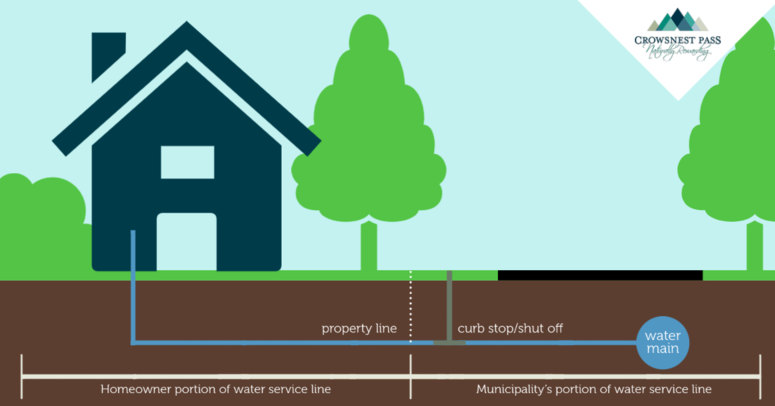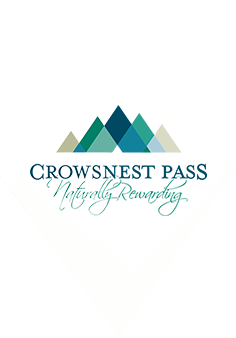Lead Management

What is Lead and What are its Health Risks?
Lead is a substance that naturally exists in soil, food, and air. In the past it was used in plumbing and water service lines. The National Plumbing Code allowed the use of lead pipes until 1975 and tin-lead solder until 1986. Construction before 1960 has been used as a benchmark for use of lead as a service line material. However, since the 1980s, the use of lead in water pipes has been significantly reduced due to its health risks. Homes over 50 years old which have not had plumbing upgrades may have lead pipes or soldered connections.
Lead exposure can cause health problems with heart, kidney, and reproductive systems in babies, children, and adults. Scientific studies now show that health effects can occur from exposure to lower levels of lead than previously thought, and Health Canada has reduced the maximum acceptable lead concentration from 0.01 mg/L to 0.005 mg/L in the Canadian Drinking Water Quality Guideline.
Lead in Drinking Water
Drinking water from municipal facilities is virtually lead free. But lead can get into drinking water from service lines, and plumbing fittings which contain lead. Many things can affect the amount of lead seeping into water, including chemistry of the water, age of the plumbing system (corrosion) and stagnancy of the water system.
Lead Management Program at Crowsnest Pass
The Municipality of Crowsnest Pass is working with Alberta Environment and Parks (AEP) to develop a 5-year lead management program (2020 - 2024) to reduce lead levels and meet the requirements of the new Canadian Drinking Water Guideline.
Major tasks of the program include:
- Public communication about health risk of lead exposure and methods to avoid exposure.
- Sampling at water taps to verify lead levels and identify lead sources.
- Records management, database with lead sampling results and potential or confirmed lead sources.
- Investigative sampling and follow-up to identify lead sources.
- System assessment and develop action plan based on the assessment results.
Right now, we are at the planning stage of the program and will move to the sampling stage this summer. After the initial sampling, further information will be provided as the program proceeds.
What you can do to Reduce your Lead Exposure and Participate in the Program
If you suspect your plumbing fittings may contain lead, there are several things you can do to lower your exposure to lead, including:
- Use cold water for drinking and food preparation, as hot water increases lead dissolution.
- Run your water line for about 1 minute until it is cold, before you drink or use the water to prepare food,
- Install and use a point of use (POU) filtration device to remove lead,
- If your residence includes older plumbing pipe and fittings that may contain lead, consider replacement of pipe including your service line.
Installation of POU devices
For most effective results, a device should be installed at the kitchen tap which is most used for drinking water. The POU devices can be carbon-based filters, reverse osmosis, or distillation systems. Options for filter systems include pour-through pitchers, countertop devices connected to sink faucet, or a plumbed-in filter under the sink.
POU devices should be certified, installed, and maintained according to the manufacturers’ instructions. Organizations accredited to certify the devices include CSA group, NSF International, and Water Quality Association.
How to check the pipe material of your water service line
- Locate the water shutoff valve, which is usually in the basement,
- Check the color of pipe prior to the shutoff valve. You may have to lightly sand the pipe to see the fresh metal color, if the color is:
- Copper (same color as a Canadian penny), it is likely copper,
- Bluish green or black, it is likely plastic,
- Dark grey, it is likely galvanized iron or lead.
- Check the hardness of the pipe. Lead is a relatively soft metal and scratches easily.
An instructional video on www.EPCOR.com/lead provides more detailed information on how to check for lead pipes.
Further Information about Lead in Drinking Water and Health Impacts
- Lead and Drinking Water from Lead Service Lines, published by Alberta Health
- Common Questions about Lead and Drinking Water, published by Alberta Health Services
- Drinking Water: What about lead? Published by Health Canada
- AEP Guidance Document for Managing Lead in Municipal Drinking Water Systems in Alberta, published by Alberta Environment and Parks
Participate in the Lead Management Program
If you are interested in participating, please complete the Lead Water Sample Collection Form. If you are chosen as a sampling volunteer, you will be contacted with further details of the sampling procedure.
